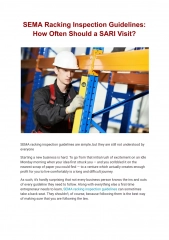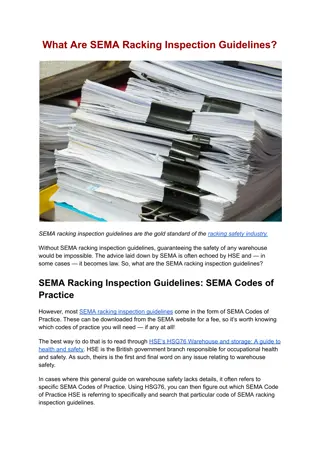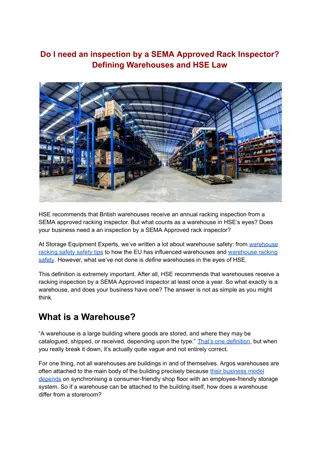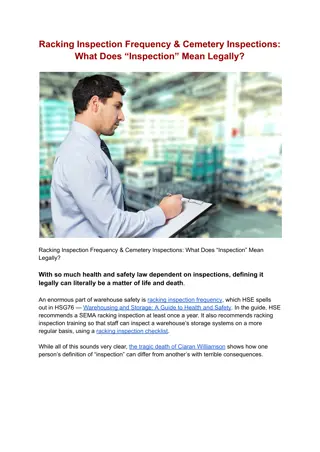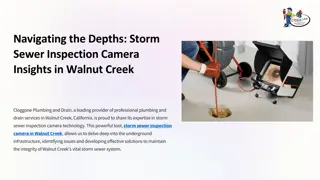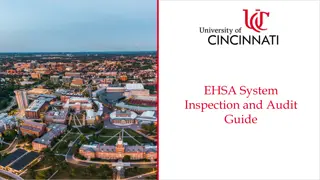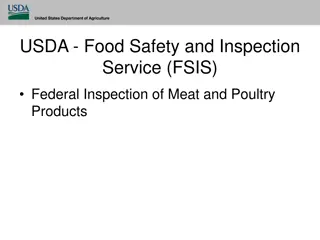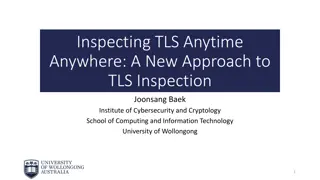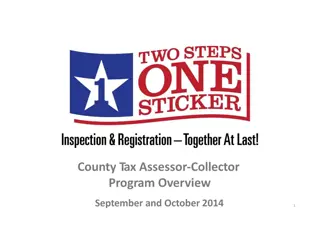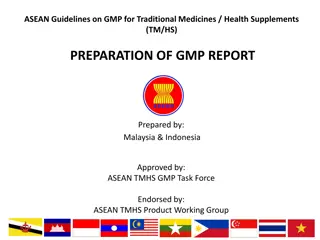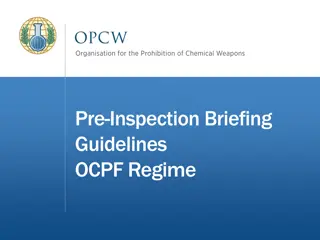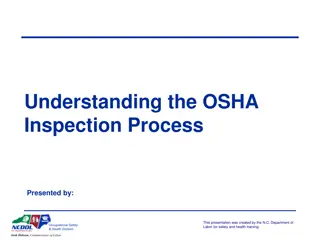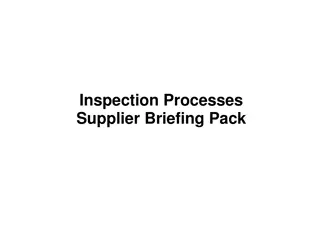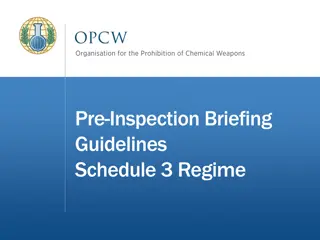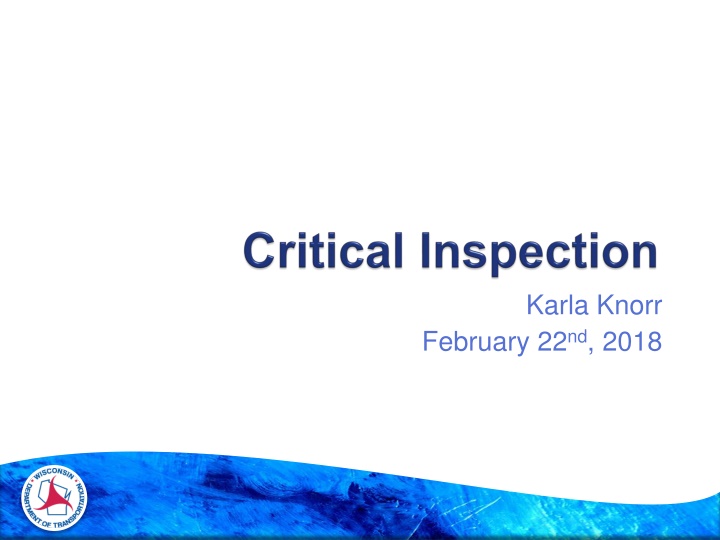
Efficient Inspection Guidelines for Engineers and Consultants
Enhance your inspection efficiency with the revised Wisconsin Department of Transportation guide, focusing on preventing high-risk consequences and finding the right balance of staffing for projects. The guide outlines minimum inspection requirements and different types of inspections such as continuous, intermittent, and end-of-product inspections. Explore how prioritizing inspection levels based on associated risks can lead to cost savings and operational efficiencies.
Download Presentation

Please find below an Image/Link to download the presentation.
The content on the website is provided AS IS for your information and personal use only. It may not be sold, licensed, or shared on other websites without obtaining consent from the author. If you encounter any issues during the download, it is possible that the publisher has removed the file from their server.
You are allowed to download the files provided on this website for personal or commercial use, subject to the condition that they are used lawfully. All files are the property of their respective owners.
The content on the website is provided AS IS for your information and personal use only. It may not be sold, licensed, or shared on other websites without obtaining consent from the author.
E N D
Presentation Transcript
Karla Knorr February 22nd, 2018
Guide can be found on www.wisconsindot.gov Under Doing Business/Engineers and Consultants/Structure and Road Resources Guide was recently revised and has a slightly different format. 2
Minimum Inspection based on preventing high risk consequences of failure. Expectation is that cost savings and efficiencies will be realized by using the appropriate level of inspectors as well as combining several tasks to be administered by an individual inspector. 3
Continuous Inspection = Requires inspection during the entire operation. Example: Concrete Paving 4
Intermittent Inspection = Requires inspection at critical times in the operation. Example: Excavation 5
End of Product = Requires inspection only after completion of the operation and during the construction operation when time permits. Currently, no items are designated as end of product inspection. 6
Staffing Guidelines are listed Trying to find the right balance between inspector experience and what is needed for projects Evaluated on a project by project basis Consider other factors such as job conditions and contractors performance on past projects Priority Level of associated risk resulting from insufficient inspection 7
Guide provides minimum inspection requirements based on preventing high risk consequences of failure Looking for efficiencies during inspection 8

